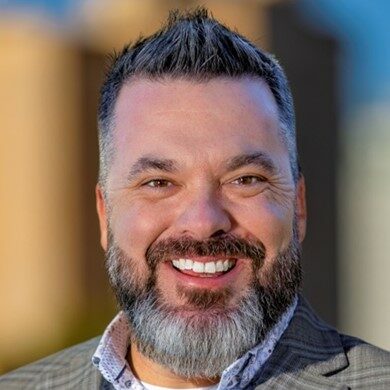I’m calling it now: the most successful loan officers of 2024 will be those who make the best efforts to bring back what I call “neighborly banking.” Yes, that’s pretty much what it sounds like. But for you to really understand what I’m saying, we need to start with some stats.
Four out of five credit union members would rather do their banking online than in person, and Accenture reports that about four out of five also say they see their relationship with their financial institution as purely transactional. However, EY notes that 40% say they’d be more likely to stay with their provider if it offered more personalized service.
That’s the data. Now here’s the insight.
Digital transformation in banking has brought a revolution in convenience that’s been highly valuable to members. They can take care of their financial needs on the go without needing to schedule an appointment at their branch or wait in a long line. The digital transformation has been helpful for financial institutions too. The digital fingerprints left behind by members have allowed institutions to get even more data about the members they serve, with the ability to reach them more regularly, and, in theory, with more relevant offers.
The digital transformation’s casualty: intimacy
No one wants to go back to the Dark Ages. But every change comes with negatives as well as positives, and those last two stats suggest that the chief casualty of this transformation has been genuine relationships with members.
Permit me a bit of nostalgia. Before the aughts came around, branch employees and loan officers often knew their members on a first-name basis. But more than that, they knew their dreams, whether it was buying a home, a car, or paying for an education. This was precious knowledge because it represented intimate relationships. And the better the relationships that undergird it, the better a business will do.
To be clear, I’m not just talking about a trip down memory lane here—I’m talking about member loyalty and making truly relevant offers to your clientele. This is the essence of neighborly banking.
Despite the vast amounts of data at their disposal, most credit unions still aren’t making particularly relevant offers to their members. The reality is that credit unions exist to serve the financial needs of their communities and data is integral to meeting that reality. There’s a naive understanding of how to leverage data effectively—as well as an ongoing gap in making that leverage not seem quite so creepy.
How can loan officers retain the convenience and deep knowledge of digitization while still personalizing the member experience? Or, in other words, how to personalize while remaining personable? This is the question that loan officers need to be asking themselves way more. Because the stats don’t lie – members like online banking, but they also feel like credit unions don’t care about them—and their loyalty may hinge on getting offers that are more genuinely tailored to their needs.
In 2024, navigating these points is a sure, though not necessarily easy, path to differentiation and greater success.
The reason I say not necessarily easy is because personability and personalization, despite their common etymology, can get far apart from each other in meaning—the word creepiness comes to mind. Universally, members are sensitive that their data be used appropriately. But where that line is, is not universal at all.
Returning to the past, when loan officers would meet with members it was natural to ask questions—your “Hi, how are you doing?” and “How’s the family?” And so on. Loan officers could use that information to help better tailor what they offered to their members, and that was understood as natural and preferable.
You can’t really draw an equivalent between that process and some of the sketchier forms of data collection that often get leveraged to offer services to a member. But there are good alternatives. Zero-party data, for example—stuff that the client offers up themselves, often through surveys—has none of the oily film of misappropriation that can plague other data forms. Still, it’s a far cry from a handshake and conversation. But we’re getting closer.
Member personas as a way forward
One possible way forward is taking that kind of information and building out thoughtful member personas. This goes way beyond the superficial approach to leveraging data (often abetted by creepy data collection methods), which usually amounts to little more than just taking a name and attaching it to a very small tree of data points.
For example, take Sally, a mortgage holder in her early 30s. Digging deeper into your data, and the richer points that zero-party data likely includes, should yield a deeper understanding of your member—and allow you to build full-fledged member personas that are much closer to the in-person connection of yesteryear.
In this way, Sally becomes an experienced homebuyer, who recently just sold a home, doesn’t mind using credit to get the things she needs, and might consider refinancing if the rates were good—in other words, Sally becomes a person again.
Building good member personas using zero-party data might be one way to bridge the gap between digital transformation and personability, bringing us forward to a tech-empowered version of neighborly banking. There may be other strategies too.
But no matter the method, loan officers and banks should be thinking carefully about how to humanize their banking practices. Remember: neighborly banking isn’t a matter of nostalgia, it’s a way of pulling together the disparate needs of members in 2024, excited about the convenience that digital transformation offers them—while still wanting a human touch.
























































